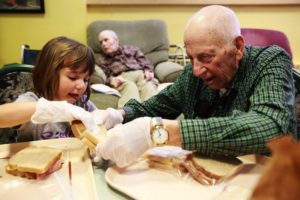Planning for a potential new public health building, Linn County has an opportunity to turn a good idea into a great one.
If approved, the new facility would be located at 1019 Seventh St SE, the former Options site, and would probably require a levy, currently estimated at 6 cents per $1,000 evaluation.
Area seniors, displaced and scattered since the 2008 flood claimed the Witwer Center, advocated Wednesday for the inclusion of a permanent centralized senior center. Since Cedar Rapids is the largest city in Iowa without such a hub and more than a third of all county residents are over the age of 50, the proposal and investment make sense. Supervisors also appear receptive to the idea, requesting more specific space needs as quickly as possible.
Those who spoke and support the project are collectively known as the Older Adult Advocacy Group, a collaborative organization that includes Horizons, the Heritage Agency, AARP, Aging Services, Abbe Health Center, the African American Museum, Home Choice, TRIAD, Eastern Iowa Health Center and other individual advocates. Just like the Witwer, it’s easy to see a new senior center would be an active space, offering meals, activities and educational opportunities.

If a senior center is the only facility the county is able to provide, it would be an important and valued asset. But, while we’re planning, why not go a step further and imagine the possibilities of an Intergenerational Learning Center that would pair young with old?
It’s an idea that has worked so well in Seattle that a documentary was made about it. The film was shot over the course of the 2012-13 school year by Evan Briggs, an adjunct professor at Seattle University interested in exploring aging in America.
The documentary focuses on Providence Mount St. Vincent, a residential care center, where five days a week preschool children on the same campus join with care residents for activities like dancing, art, meals and storytelling. Together the adults and children have embarked on service projects, such as preparing sandwiches to feed the homeless.

On the Kickstarter page used to fund the documentary Briggs wrote, “Shooting this film and embedding myself in the nursing home environment also allowed me to see with new eyes just how generationally segregated we’ve become as a society. And getting to know so many of the amazing residents of the Mount really highlighted the tremendous loss this is for us all.”
Pairing a youth and senior center would be different from combining a preschool with a nursing or retirement home, but it’s the outcomes, not the process itself, that is most important and would benefit the community.
Participating children not only learn about the aging process, but become more accepting of those with disabilities and receive unconditional love. Older adults receive a renewed sense of community worth, as well as the socialization and joy children can provide.
We talk a good game about valuing all of our residents, about caring for all generations. Let’s put them together and prove that commitment.
This column by Lynda Waddington originally published in The Gazette on January 16, 2016. Photo credit: Erika Schultz/Seattle Times/TNS
